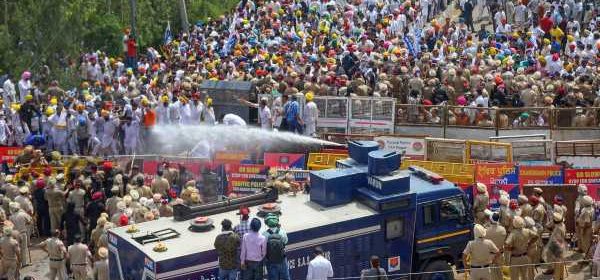Is Navjot Sidhu right about Punjab’s power crisis?

‘The Akali government is not responsible for the Punjab power crisis as Mr Sidhu is saying.’
Punjab’s power crisis turned into national news after Congress MLA Navjot Singh Sidhu criticised his party’s government headed by Captain Amarinder Singh over the issue.
The situation worsened to an extent where the state government has told industries to shut down for two days to tide over the power shortage.
Sidhu has been leading a campaign for the government to cancel the power purchase agreement entered into by the previous Shiromani Akal Dal government, saying its clauses were punitive on the state.
The Aam Aadmi Party has jumped into the fray, promising the electorate 300 units of free electricity if elected to power, a demand that Sidhu too echoed along with providing 24×7 power supply.
Clearly, the Amarinder Singh government is caught on the wrong foot over the state’s power shortage.
“Elected governments never give weightage to professionals. We have been saying right from the 1990s that there has to be a balance between private and government sector but they never listen to us,” Darshan Singh Bhullar, retired deputy chief engineer, Punjab State Power Corporation Limited, tells Rediff.com‘s Syed Firdaus Ashraf.
How grim is the power situation in Punjab?
There is a power shortage of 1500 MW.
It is all because of the private power thermal plant at Bhatinda district which is out of order for the last four months.
Secondly, the government has not increased the transmission capacity, thus causing problem.
Thirdly, in December, the government decommissioned one public sector power plant at Bhatinda and two power plants at Ropar.
This led to the power crisis in Punjab as there was complete mismanagement.
Is it a failure of Captain Amarinder Singh’s government?
It is a policy failure as they did not expect this problem to arise.
They failed to calculate the increase in annual maximum demand.
For nine months Punjab has power surplus.
Our average demand for nine months is around 7000 MW and we have an installed capacity of 13844 MW.
It is in December during the paddy season that Punjab faces a power shortage.
In order to face this power shortage Punjab has to increase the transmission capability.
Right now, Punjab has 6800 MW transmission capability whereas it should have been around 8000 MW of transmission capacity.
You spoke of the paddy season. Is it true that Punjab farmers bring in huge machines to draw water from the ground that results in excess demand of power due to which there is shortage?
As I said, we knew there was a shortage of 1500 MW in summer season which was known to the government.
They failed to get the extra power and also failed to get private thermal power plants to run in the summer season.
In PPAs (power purchase agreements) there is no penalty on private power plants if they do not supply electricity in summer or paddy season.
We cannot impose a penalty on them.
This is what Navjot Singh Sidhu is saying, that the previous Akali government signed faulty, non-negotiable, PPAs which has resulted in this crisis. Is that true?
That resulted in high power cost.
Moreover, during that government’s time Punjab needed extra 2000 MW of power whereas they installed only a 4000 MW power plant.
Now we are paying more to them without getting electricity, which we call surrendered power (external link).
The Akali government is not responsible for the Punjab power crisis which is going on right now as Mr Sidhu is saying.
Only the power rates are high because of that agreement.
Can this crisis be solved by purchasing power from other states?
We have a transmission capability of 6800 MW.
The PSPCL (Punjab State Power Corporation Limited) failed to increase this capacity.
They did not do their work on time.
Had they done so, this crisis would not have arisen.
PSPCL Managing Director Venu Prasad said the hailstorm in Punjab between June 10 and 15 damaged the power plants, and the delay in repairing them has resulted in this crisis. Is it true?
These things are only temporary.
These faults can be rectified.
Another problem is that the private power plant at Talwandi Sabo is out of order for the last four months.
Late monsoon or hailstorms are not responsible for the current power crisis.
Do you think shutting down industries for two days is a good solution?
Temporarily, it may solve the problem.
Punjab’s power situation will worsen if there is no monsoon.
Punjab State Electricity Board Association engineers say they had warned the government not to shut the Bhatinda thermal plant and two units of the Ropar plant, but they still went ahead and shut it down. Why?
Elected governments never give weightage to professionals.
They bring their own trusted (people).
They bring in new plants or machineries from old plants to solve the problems.
We have been saying right from the 1990s that there has to be a balance between the private and government sector, but they never listen to us.
Source: Read Full Article
